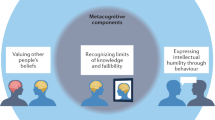Abstract
This study examines the object-subject (stimulus-resipient) trap in the study of humour, whereby humour is perceived as arising either from some properties of the object (stimulus) or from the peculiarities of the subject (recipient). The chapter not only suggests the necessity of always considering the two (object-subject) sides in order to well appraise humour, but also crucially proposes a conceptualization of humour as competence, in the sense of a personality trait, which is analogous to sense of humour in psychology. This view of humour can enable the use of methods of competence measurement to appraise and assess the quality of humour. Finally, the Rasch model is presented in this chapter as a particularly effective method of humour competence measurement.
Access this chapter
Tax calculation will be finalised at checkout
Purchases are for personal use only
Similar content being viewed by others
References
Anz, Thomas. 1998. Literatur und Lust: Glück und Unglück beim Lesen. [Literature and Lust: Happiness and Unhappiness in Reading.] München: Beck.
Attardo, Salvatore. 1998. The Analysis of Humorous Narratives. Humor: International Journal of Humor Research 11 (3): 231–260.
———. 2008. A Primer of the Linguistics of Humor. In The Primer of Humor Research, ed. Victor Raskin, 101–155. Berlin: Mouton de Gruyter.
Attardo, Salvatore, and Victor Raskin. 1991. Script Theory Revis(it)ed: Joke Similarity and Joke Representation Model. Humor: International Journal of Humor Research 4 (3/4): 293–347.
Damasio, Antonio. 2003. Looking for Spinoza: Joy, Sorrow, and the Feeling Brain. Orlando Fla.: Harcourt.
Davis, Jessica Milner, and Jennifer Hofmann. 2023. The Humor Transaction Schema: A Conceptual Framework for Researching the Nature and Effects of Humor. HUMOR 36 (2): 323–353.
Feingold, Alan, and Ronald Mazzella. 1993. Preliminary Validation of a Multidimensional Model of Wittiness. Journal of Personality 61 (3): 439–456.
Kebeck, Günther. 1997. Wahrnehmung: Theorien, Methoden und Forschungsergebnisse der Wahrnehmungspsychologie. [Perception: Theories, Methods and Research Results of Perception Psychology.] Weinheim: Juventa-Verl.
Koestler, Arthur. 1967. The Act of Creation. New York: Macmillan.
LeDoux, Joseph E. 2010. Das Netz der Gefühle: Wie Emotionen entstehen. [The Web of Feelings: How Emotions Arise.] München: Dt. Taschenbuch-Verl.
Leiner, Dominik. n.d. SoSci Survey. Der Online-Fragebogen. [SoSci Survey. The Online Questionnaire.] München: SoSci Survey GmbH. Entnommen von. www.soscisurvey.de
Mair, Patrick, Reinhold Hatzinger, and Marco J. Maier. n.d. Extended Rasch Modelling: The R Package eRm (Version 1.0–2).
Martin, Rod A. 2007. The Psychology of Humor: An Integrative Approach. Amsterdam: Elsevier.
Platt, Tracey, and Willibald Ruch. 2014. 3 WD Humor Test. In Encyclopedia of Humor Studies, ed. Salvatore Attardo, 764–765. Los Angeles: SAGE Publications, Inc. https://doi.org/10.4135/9781483346182.
Raskin, Victor. 1985. Semantic Mechanisms of Humor. Dordrecht: Reidel.
Ruch, Willibald. 1992. Assessment of Appreciation of Humor: Studies with the 3 WD Humor Test. Advances in Personality Assessment 9: 27–75.
———. 2001. The Perception of Humor. Emotion, Qualia and Consciousness 410–425. https://doi.org/10.1142/9789812810687_0032.
Schachter, Stanley, and Jerome Singer. 1962. Cognitive, Social and Physioligical Determinants of Emotional State. Psychological Review 96: 379–407.
Springer, Matthias. 2013 Humor aus dem Computer? Grundlagen einer Web-Applikation zum Test von Komik in narrativen Texten.[Humour from the Computer? Basics of a Web Application for Testing Comedy in Narrative Texts.] Peter Lang Edition Frankfurt am Main: Lang.
Strobl, Carolin. 2015. Das Rasch-Modell. [The Rasch-Model.] München; Mering: Rainer Hampp Verlag.
Suls, Jerry M. 1972. A Two-Stage Model for the Appreciation of Jokes and Cartoons: An Information-Processing Analysis. In The Psychology of Humor, ed. Jeffrey H. Goldstein and Paul E. McGhee, 81–100. San Diego: Academic Press.
Walzik, Sebastian. 2012. Kompetenzorientiert prüfen. [Test Based on Competence.] Opladen; Toronto: Verlag Barbara Budrich.
Weinert, Franz E. (2002). Vergleichende Leistungsmessung in Schulen—eine umstrittene Selbstverständlichkeit. In: Franz E. Weinert (Hg.), Leistungsmessungen in Schulen. [“Comparative Performance Measurement in Schools—A Controversial Matter of Course.” In Achievement Measurements in Schools, edited by Franz E. Weinert, 17–32.] Weinheim [u.a.]: Beltz.
Author information
Authors and Affiliations
Corresponding author
Editor information
Editors and Affiliations
Rights and permissions
Copyright information
© 2023 The Author(s), under exclusive license to Springer Nature Switzerland AG
About this chapter
Cite this chapter
Springer, M. (2023). The Rasch Model in Humour Research. In: Oloruntoba-Oju, T. (eds) Humour Theory and Stylistic Enquiry. Palgrave Macmillan, Cham. https://doi.org/10.1007/978-3-031-40387-3_3
Download citation
DOI: https://doi.org/10.1007/978-3-031-40387-3_3
Published:
Publisher Name: Palgrave Macmillan, Cham
Print ISBN: 978-3-031-40386-6
Online ISBN: 978-3-031-40387-3
eBook Packages: Social SciencesSocial Sciences (R0)




